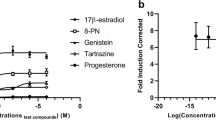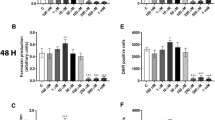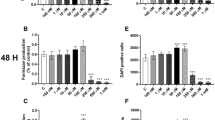Abstract.
A human breast cancer cell line (MCF-7) was used to develop an in vitro screening assay for the detection of xenoestrogenic environmental pollutants. MCF-7 cells were cultured in DMEM containing 5% fetal bovine serum (FBS). An estrogenic response was defined as an increase in the frequency of proliferating MCF-7 cells, and was measured using a thymidine analog, bromodeoxyuridine, and flow cytometry. Di-2-ethylhexyl phthalate (DEHP) and 4-n-nonylphenol (4-n-NP) were used as model chemicals. The proliferation rate of S-phase cells after 24 h of exposure to various concentrations of 17β-estradiol and to model compounds was compared with a positive and a negative control, containing 1 nM 17β-estradiol and 0.1% ethanol, respectively. DEHP and 4-n-NP increased the frequency of proliferating MCF-7 cells in a dose-dependent manner. The lowest concentration that significantly increased the proliferation of MCF-7 cells was 10 μM for DEHP and 1 μM for 4-n-NP.
The results showed that the assay is accurate and quick to perform. It may prove a valuable tool for screening potential estrogen-mimicking environmental pollutants.
Similar content being viewed by others
Author information
Authors and Affiliations
Additional information
Received: 5 May 1997/Accepted: 9 September 1997
Rights and permissions
About this article
Cite this article
Blom, A., Ekman, E., Johannisson, A. et al. Effects of Xenoestrogenic Environmental Pollutants on the Proliferation of a Human Breast Cancer Cell Line (MCF-7). Arch. Environ. Contam. Toxicol. 34, 306–310 (1998). https://doi.org/10.1007/s002449900322
Issue Date:
DOI: https://doi.org/10.1007/s002449900322




